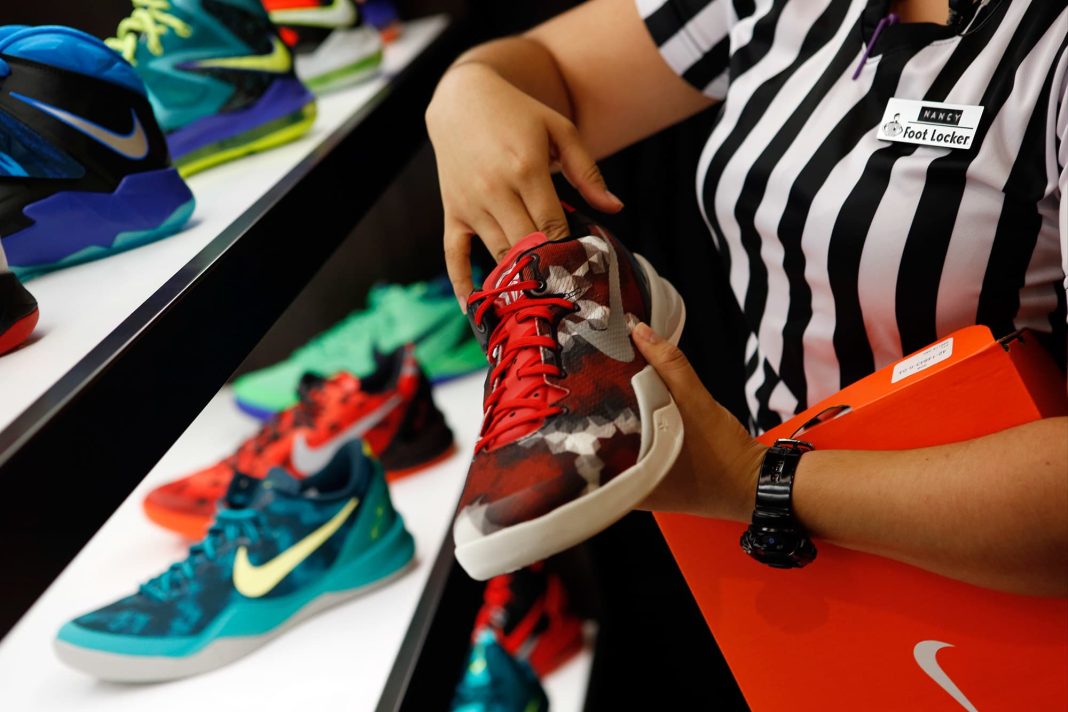### Foot Locker: Celebrating 50 Years Amid Transformation and Challenges
Foot Locker’s 50th anniversary celebrated not just a milestone but also a significant turning point for the iconic sneaker retailer. As the festivities unfolded in New York City, with Grammy-nominated artist Coi Leray performing her hit song “Players,” a sense of optimism permeated the atmosphere. Yet, only months earlier, Foot Locker had been precariously perched on bankruptcy watch lists, raising questions about its future in an ever-evolving retail landscape.
#### A Legacy Under Pressure
Founded in 1974 in City of Industry, California, Foot Locker quickly became a titan in the athletic footwear market. By the early 2000s, it boasted a commanding 20% market share in the U.S. and was responsible for nearly a third of Nike’s domestic revenue. However, as retail trends shifted and consumer preferences evolved, the company’s once-untouchable position began to wane. The advent of online shopping and the decline of mall traffic posed existential challenges.
Janine Stichter, a retail analyst at BTIG, notes, “In those early years, it was a simpler retail world. Foot Locker thrived in an environment with limited competition, but the landscape has changed dramatically.” The once-reliable model of mall-centric stores became increasingly vulnerable as brands pivoted toward direct-to-consumer strategies.
#### The Complacency Crisis
When Frank Bracken joined Foot Locker in 2010, the company was riding high on a strong relationship with Nike, which accounted for three-quarters of its products. However, complacency set in, and by the time the pandemic struck, Foot Locker found itself ill-prepared to adapt. “Competition used it as an opportunity to invest in technology and capabilities, while we stood still,” Bracken admitted.
The immediate fallout was dire. By the end of fiscal 2022, comparable sales in North America had plummeted by 7.2%. As Nike began to retreat from wholesale partnerships, Foot Locker’s reliance on the brand became a double-edged sword. The retailer was left scrambling, cutting its guidance and suspending dividends as it confronted a harsh new reality.
#### Enter Mary Dillon: A New Era Begins
In September 2022, Mary Dillon, formerly of Ulta Beauty, took the reins at Foot Locker. Regarded for her ability to foster brand relationships, Dillon was welcomed by Wall Street with cautious optimism. “Dillon’s leadership brings a fresh perspective, and her operational expertise is beginning to show results,” said Neil Saunders, a retail analyst at GlobalData.
Dillon quickly unveiled her “Lace Up” turnaround strategy, focusing on revitalizing relationships with key brands, enhancing marketing efforts, and improving online sales. However, the road ahead was fraught with challenges, particularly as macroeconomic pressures weighed heavily on the retailer’s low-income customer base.
#### Signs of Recovery
Despite a tumultuous fiscal year, Foot Locker is starting to witness the fruits of its labor. Online sales are on the rise, and the company is reworking its loyalty program, FLX, to better engage customers. “We know we only capture a fraction of the annual sneaker spend from our existing customers,” said Kim Waldmann, Foot Locker’s chief customer officer. The goal is clear: to consolidate the share of wallet by providing value to shoppers.
Additionally, the company is actively working to modernize its aging store fleet, which is critical given that retail locations account for 80% of its sales. Since Dillon’s tenure began, the company has closed around 500 stores while opening 200 new locations and remodeling several others. This proactive restructuring is crucial as brands increasingly seek to showcase their products individually, rather than mix them with competitors.
#### Navigating the Future
As Foot Locker looks forward to the next 50 years, questions linger about its ability to sustain growth in a rapidly changing environment. While Nike’s recent acknowledgment of the importance of retail partnerships is a promising sign, Foot Locker’s dependence on external brands for its success remains precarious. The retailer’s future may hinge on whether it can effectively execute its strategy and remain relevant amid fierce competition.
Stichter emphasizes, “Consumers appreciate a multi-brand experience. Foot Locker has a unique opportunity to be a preferred destination if it can successfully curate a diverse selection.” The ultimate challenge will be balancing relationships with brand partners while also carving out a distinct identity in a marketplace that is increasingly favoring direct-to-consumer models.
In summary, Foot Locker’s journey is a testament to the resilience of a brand that, while facing significant challenges, is working diligently to adapt to the changing tides of retail. As it celebrates its past, the company must remain acutely aware of the need to innovate and evolve, ensuring that it retains its place in the hearts—and on the feet—of sneaker enthusiasts for years to come.

